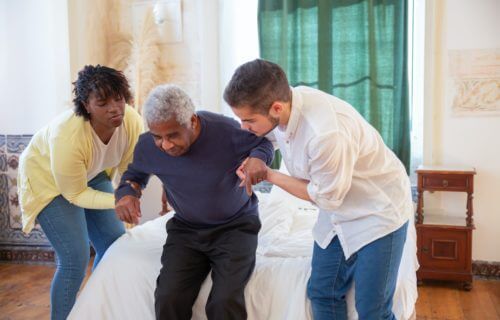BOULDER, Colo. — As we grow older, it’s not uncommon to notice a gradual decline in our physical speed and agility. Whether it’s taking a leisurely stroll around the neighborhood or reaching for the TV remote, our movements tend to slow down the older we get. So, what causes this change? A study led by engineers at the University of Colorado Boulder (CU Boulder) is shedding new light on this age-old question.
The study, published in the journal JNeurosci, is one of the first to experimentally investigate the competing reasons behind the slowdown in movement among adults over the age of 65. CU Boulder researchers found that older adults may move slower, at least in part, because it costs them more energy than younger people.
“Why we move the way we do, from eye movements to reaching, walking and talking, is a window into aging and Parkinson’s,” says study co-author Alaa Ahmed, a professor in the Paul M. Rady Department of Mechanical Engineering at CU Boulder, in a media release. “We’re trying to understand the neural basis of that.”
For the study, researchers asked participants ranging in age from 18 to 35 and 66 to 87 to complete a simple task: reaching for a target on a screen, similar to playing a video game on a Nintendo Wii. By analyzing patterns of these reaches, the team discovered that older adults seemed to modify their motions under certain circumstances to conserve their more limited energy supplies.
“All of us, whether young or old, are inherently driven to get the most reward out of our environment while minimizing the amount of effort to do so,” notes co-lead study author Dr. Erik Summerside, who earned his doctorate in integrative physiology from CU Boulder in 2018.

The study explored two hypotheses for why older adults move slower. The first suggests that older adults’ muscles may work less efficiently, burning more calories while completing the same tasks as younger adults. The second proposes that aging might alter the reward circuitry in the human brain, as people produce less dopamine, a brain chemical responsible for providing a sense of satisfaction after completing a task.
During the experiment, participants used a robotic arm to move a cursor toward a target on a computer screen. If they succeeded, they received a small reward, such as the target exploding and a “bing bing” sound playing. Both age groups reached their targets sooner when they knew they would hear the rewarding sound, but they achieved this goal in different ways. Younger adults moved their arms faster toward the reward, while older adults mainly improved their reaction times.
When researchers added an eight-pound weight to the robotic arm for the younger participants, the differences between the two age groups disappeared, which piqued their interest.
“The brain seems to be able to detect very small changes in how much energy the body is using and adjusts our movements accordingly,” explains co-lead study author Dr. Robert Courter, who earned his doctorate in integrative physiology from CU Boulder in 2023. “Even when moving with just a few extra pounds, reacting quicker became the energetically cheaper option to get to the reward, so the young adults imitated the older adults and did just that.”
The findings suggest that the effort costs of reaching seem to be the determining factor in what’s slowing the movement of older adults. While the study can’t completely rule out the brain’s reward centers as a culprit, if scientists can identify where and how these changes emerge from the body, they may be able to develop treatments to reduce the toll of aging and disease.
“Putting it all together, our results suggest that the effort costs of reaching seem to be determining what’s slowing the movement of older adults,” says Ahmed.
This research could potentially provide doctors with new tools for diagnosing a range of illnesses, including Parkinson’s disease, multiple sclerosis, depression, and schizophrenia. As we continue to unravel the mysteries of aging and movement, studies like this bring us one step closer to understanding and addressing the challenges that come with growing older.
StudyFinds’ Matt Higgins contributed to this report.
